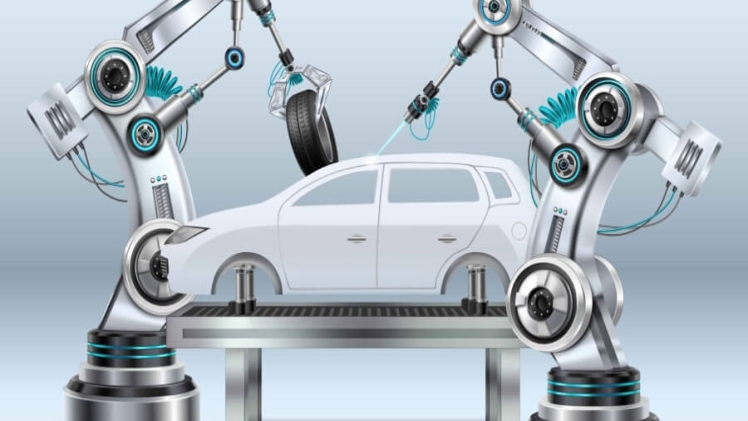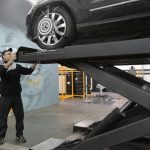Introduction:
The automotive industry, a cornerstone of modern civilization, has undergone a remarkable evolution since the days of the horseless carriage. From the first mass-produced automobiles to the current era of electric and autonomous vehicles, the automotive landscape continues to shape the way we live and move. This article explores the multifaceted dimensions of the automotive industry, from technological innovations and sustainability efforts to the challenges it faces and the exciting prospects that lie ahead.
Technological Innovations Driving Change:
The automotive industry has always been at the forefront of technological innovation, and the recent years have seen an unprecedented surge in advancements. The rise of electric vehicles (EVs) stands out as a significant milestone in the pursuit of sustainable transportation. Companies like Tesla have spearheaded this movement, proving that electric cars can be both high-performing and environmentally friendly. The development of advanced battery technologies has played a pivotal role in extending the range and improving the efficiency of electric vehicles.
Furthermore, the concept of autonomous driving has shifted from science fiction to reality. Companies like Waymo, Uber, and traditional automakers are investing heavily in autonomous vehicle technology, aiming to create a future where cars can navigate the roads without human intervention. These developments not only promise increased safety but also have the potential to revolutionize transportation for people with limited mobility.
Connected cars, equipped with smart technologies that enable them to communicate with each other and the surrounding infrastructure, are becoming more prevalent. This connectivity enhances safety, efficiency, and convenience on the roads. From real-time traffic updates to predictive maintenance alerts, connected cars are transforming the driving experience.
Sustainability and Environmental Responsibility:
As the world grapples with the impacts of climate change, the automotive industry is under increasing pressure to adopt sustainable practices. Electric vehicles, with zero tailpipe emissions, have emerged as a key player in the quest for greener transportation. Governments and automotive manufacturers alike are incentivizing the production and adoption of electric cars to reduce the carbon footprint of the transportation sector.
Hybrid vehicles, combining traditional internal combustion engines with electric propulsion, offer a transitional solution, providing improved fuel efficiency and reduced emissions. Moreover, the development of alternative fuels, such as hydrogen, presents another avenue for creating environmentally friendly vehicles.
In addition to cleaner propulsion technologies, there is a growing emphasis on sustainable manufacturing practices within the automotive industry. Recycling materials, reducing waste, and adopting eco-friendly production methods are becoming integral components of the manufacturing process.
Challenges Facing the Industry:
While the automotive industry is on the cusp of transformative change, it is not without its challenges. One of the primary hurdles is the establishment of a comprehensive charging infrastructure for electric vehicles. Range anxiety, the fear of running out of battery power before reaching a charging station, remains a concern for potential EV adopters. Governments and private enterprises must collaborate to build a robust network of charging stations to support the growing fleet of electric vehicles.
The high cost of electric vehicles is another obstacle to widespread adoption. Although advancements in technology are gradually reducing manufacturing costs, making EVs more affordable remains a priority. Incentives, subsidies, and partnerships between governments and private entities can help make electric vehicles accessible to a broader range of consumers.
The automotive industry is also grappling with cybersecurity threats as vehicles become more connected. With the increasing reliance on software and data, protecting vehicles from cyber-attacks is paramount. Manufacturers must invest in robust cybersecurity measures to ensure the safety and privacy of vehicle users.
The Transition to Mobility as a Service (MaaS):
A notable shift in the automotive landscape is the transition from traditional ownership models to Mobility as a Service (MaaS). Ride-sharing services, facilitated by companies like Uber and Lyft, have transformed the way people approach transportation. The idea of accessing a vehicle on-demand, rather than owning one, is gaining traction, especially in urban environments where congestion and parking challenges are prevalent.
Autonomous vehicles are expected to play a significant role in the MaaS paradigm. Fleet-based autonomous ride-sharing services could reduce the number of privately owned vehicles on the road, leading to more efficient use of resources and reduced traffic congestion. However, the widespread adoption of MaaS poses challenges related to regulatory frameworks, infrastructure development, and public acceptance.
Conclusion:
The automotive industry stands at a crossroads, poised for a future defined by innovation, sustainability, and transformative technologies. The advent of electric vehicles, autonomous driving, and connected cars signals a paradigm shift that will reshape the way we perceive and interact with transportation. As the industry addresses challenges such as charging infrastructure, cost barriers, and cybersecurity, it paves the way for a more sustainable and interconnected future.
The automotive landscape is not just about vehicles; it’s about mobility solutions that prioritize efficiency, environmental responsibility, and enhanced user experiences. As we navigate this exciting era of change, collaboration between governments, industry stakeholders, and the public will be crucial in steering the automotive industry toward a future where mobility is not only smart and efficient but also sustainable and accessible for all.





